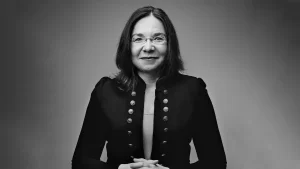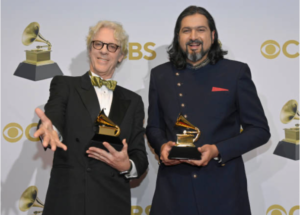Manuela Andreoni, in her article for the New York Times (NYT), discusses an important issue — Andreoni points out that only 35 percent of Americans are actively engaged in conversations about climate change at the kitchen table, over coffee or around the water cooler. She goes on to point out that it is important for everyday people to have everyday conversations about climate change. Otherwise, such discussions will always remain limited to the scientific community, which in turn will negatively impact purposeful and positive climate action across the board.
Another voice of support in this matter is that of Katharine Hayhoe, Chief Scientist at The Nature Conservancy. During an interview with Somini Sengupta from the New York Times, she said “When individuals use their voice, systems change”. However, Katharine clarifies that purely personal actions deepen climate change related inequalities, stressing on the fact that there needs to be a balance between personal climate action and systemic/policy driven change. This balance, according to Hayhoe is critical in leveling the playing field and achieving a sustainable and impactful platform for climate-positive action.

“The biggest uncertainty is us. It’s up to us to save ourselves.” – Katherine Hayhoe
Taking Hayhoe’s insight forward, one can then say that the media has an important role in getting the conversation about climate change started amongst the non-scientific community – you, me, our friends, relatives, coworkers, and neighbors. There are many different types of media that can be used to demystify climate change and create awareness in a language that can be understood, empathized with, and acted upon. This is essential not only to initiate the conversation about climate change, but also bridge the communication gap between scientists and the non-scientific communities, which is essential to avoid incorrect action and inaction in adaptation and mitigation efforts.
It then stands to reason that consistent, clear, and simple climate communication, that simplifies and dejargonizes the language around climate change is the need of the hour. And the media is an essential tool and ally in this effort. Films, music, photography, and social media can all play an important role in spreading awareness and increasing knowledge about climate change.
For instance, Action for Climate Emergency (ACE) is an organization that produces films and documentaries that educate the public on climate change. Some examples include ‘The Equator Initiative’, ‘Nature Inc.’, and ‘The Ashden Awards’ that portray the synergies of community work in addressing local environmental issues. These short documentaries are not only informative about global environmental issues, but they also present the power of human innovation. What makes the films even more powerful is their ability for the actions mentioned to be transferred and adapted in various regions. Creatives also result in the same effect. Al Gore’s 2006 documentary “An Inconvenient Truth” won two Oscars, and Al Gore himself was awarded a Nobel Peace Prize for his efforts to “build up and disseminate greater knowledge about man-made climate change”. Other environmental activists like climate communication specialist John Cook assessed the documentary’s impact in 2006, concluding that it raised awareness, changed behavior, and inspired others to communicate the issue of climate change.
 Al Gore’s An Inconvenient Truth (2006)
Al Gore’s An Inconvenient Truth (2006)
Music is also a popular medium used to raise awareness on climate change. Big names, like U.S. pop stars Billie Eilish, Lana Del Rey and Lil Nas X, have joined the daily climate conversation through their music. In India, Earth Day Network Ambassador, new age musician, and two-time Grammy Winner Ricky Kej used his platform for years to create music about the environment. Kej uses both imagery and ethnic music to support his messaging circling the promotion of conservation. His album “Divine Tides” is a prime example. In collaboration with Stewart Copeland, Ricky Kej won a Grammy Award for his album. He was also a winner and finalist in multiple international film competitions including Art Film Awards, Sweden Film Awards, and at the World Music Festival (WMF). The album articulately and elegantly portrays the beauty in the world alongside humankind. Like the title suggests, “Divine Tides” is about the divine elements of nature that are not only beautiful, but also reach the soul with tidal waves of emotions, demonstrating the deeper meaning that nature can have. Another interpretation of Ricky Kej’s music is that humans can adapt to the changing environment like the changing of the tides.

“Change has to begin with us as individuals, art can be used as a tool to empower people to believe that we can bring about that change within our own capacity.” – Ricky Kej
Another artist is National Geographic and NYT Photographer George Steinmetz, who is famous for capturing the changes in nature. His work shows the beauty of the world and the urgency of climate change through photos of the impacts stemming from climate change. Some examples include aerial views displaying algae blooms in China, a flooded Buriganga River in Dhaka, or a bustling Nanpu Bridge in Shanghai, pointing to the immense number of emissions arising from trucks on the roads. We can see that Steinmetz’s work ranges from the vast beauty of nature to the daily problems facing these landscapes. As we know, this correctly portrays the situation at hand in our world today because climate change is not a location-specific issue – it is a global crisis requiring a global solution. It affects every part of the world including developing nations, who are particularly vulnerable to climate change.

 Yard for sorting/grading coal from various mines before distributing it by truck © Steinmetz
Yard for sorting/grading coal from various mines before distributing it by truck © Steinmetz
Films, music, photographs, and social media are tools that help spark conversations, spread awareness, and help to build climate movements. Due to the visual nature of movies, they help to connect to the cognitive and visual processing skills that people have. The result is higher engagement compared to other mediums like paper based scientific and political reports which are not only much heavier and denser, but also require much longer to read through. Furthermore, mediums like films and music appeal more to the younger generation, specifically Gen Z and Millennials. Effective climate communication translates into climate action and can give us hope for our current and ongoing fight against climate change. We do have to consider that this communication is only effective when the correct information is portrayed.
We should increase climate change communication with more visual and auditory mediums such as films, photography, and music. This will not only result in messaging that is more targeted but also more fruitful. Utilizing creative, popular and mass media and leveraging trending social media platforms is critical in engaging with the global population from the grassroots level up. Such media are instrumental in starting and sustaining climate-related conversations and enable people to be proactively engaged in climate advocacy.



